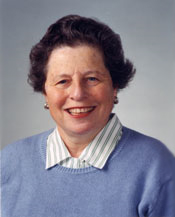
Professor Kate Lorig understands the burden of chronic disease. While growing up, she learned to handle Gaucher disease – a genetic condition that can produce bone pain, fatigue, seizures and enlarged spleen and liver. Later, as a registered nurse, she worked with patients who struggled to manage conditions such as heart disease, arthritis and diabetes. She says that both her experience as a patient and a health care professional influence the way she approaches her work as director of the Patient Education Research Center at Stanford University.
As people live longer, chronic diseases have skyrocketed, accounting for nearly 75 percent of the nation’s annual $2 trillion health expenditures, according to the Kaiser Family Foundation. (KFF Health News is a program of the foundation.) But the health system remains largely designed to treat people with acute problems and often provides fragmented care. The National Council on Aging (NCOA) found that 80 percent of adults age 65 or older have at least one chronic disease and 50 percent have more than one. One-third of them feel confused about how to manage their disease after seeing a doctor.
In 1992, Lorig helped to develop the Chronic Disease Self-Management Program, a workshop program designed to complement patients’ treatments. The classes help them cope with frustration, fatigue, pain and isolation while also teaching them effective ways to communicate, exercise and deal with medication regimes.
KFF Health News reporter Jessica Marcy recently spoke with Lorig and here are edited excerpts of the conversation:
Q. How do you think chronic illness affects people?
A. I think it impacts every aspect of their lives. They have three major tasks. They have to deal with the medical management of their disease whether it’s taking pills, or doing exercise, or diet or whatever. They have to deal with the fact that the things they want to do and need to do in life may also change. That can go all the way from no longer being able to work to no longer being able to do a loved hobby or having to change things in a major way. And [they have to cope with the] emotional impact, whether this is fear or anxiety or depression.
Q. Could the health care system do a better job addressing chronic disease?
A. The system would probably need to be totally reorganized if it was really going to do that. Right now, it addresses diseases or even parts of diseases or small sub-parts of the body. It does not address the whole, complex person with multiple chronic diseases. So, right now, what happens, if you’re lucky, you go to a primary care doc who kind of does the day-to-day stuff and then you see four or five specialists each of which do their little specialty part — none of whom really talk to each other except maybe to look at your laboratory tests on an electronic medical record if you’re really lucky.
It is totally uncoordinated. It’s chaotic. It serves pieces of people, not whole people.
Q. How does your program empower individuals to take control of their own health?
A. We take the term self-management very seriously. A good manager is one that makes day-to-day decisions about one’s health but at the same time uses consultants – health professionals, family and friends, other community resources. The way a person can take control or manage a chronic illness is to first understand that most people live 99.9 percent of their lives outside of the health care system. So, they are responsible for managing the disease during that time, for making decisions [about exercise, eating, and activity].
We don’t tell people what to do. We give them a tool kit and we give them a little practice. How they use these tools and which ones they use are up to them.
Q. Have you faced any problems in implementing the program?
A. Individuals have a hard time understanding what a chronic disease is. I’ve been told many times, “I don’t have a chronic illness, I have diabetes,” or “I don’t have a chronic illness, I have arthritis.”
[In addition,] there has been a problem with linking the community agencies offering the program and the providers who could be very, very useful in referring [patients]. The linkages with the established health care system could probably be stronger than they are.
Q. What have been the outcomes and what are some of the benefits?
A. What we know about the small-group program is that it consistently improves health status. People have fewer symptoms, less pain, less depression, less shortness of breath. They feel more empowered, they have better self-efficacy or better confidence in their abilities to take care of their chronic illnesses and in some cases, lower their health care utilization.
Q. How do you think the program fits into efforts to improve the national health care system?
A. It’s a small piece but it’s a very important piece. We have to prepare our population to live with chronic illness. And this program can prepare very large numbers of people to live on a day-to-day basis more comfortably and more productively. At the same time, as people do this, they can also lower health care costs by utilizing, especially inappropriate services, less.






